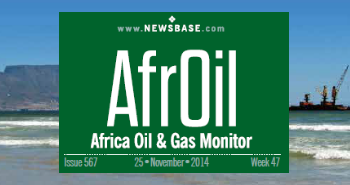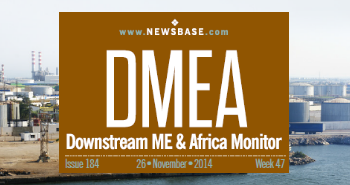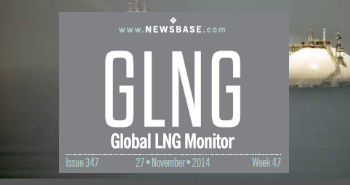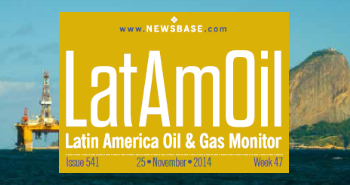Downstream impact

NewsBase takes a brief look at some of the economic and political fallout from the Russia-Ukraine war, with a focus on regional markets for jet fuel and diesel around the world
WHAT: The reduction in Russian oil flows to world markets has affected jet fuel and diesel prices, as well as crude prices.
WHY: Middle distillate prices seem to be under even more pressure than crude prices, and this pressure is evident in multiple regions.
WHAT NEXT: The EU’s planned embargo on Russian oil imports has the potential to lead to further disruptions in trade flows.
Russia’s policy toward Ukraine has had a huge impact on world oil markets over the last six months. Prices began moving upward late last year as Russian troops began gathering at Ukraine’s border, and they have shot upward since the outbreak of war on February 24.
This unprovoked invasion of a neighbouring country has led a number of Western countries to impose restrictions on the importation of Russian oil, in an attempt to deprive the Kremlin of one of its most important sources of hard currency. It has also led a number of private-sector organisations to spurn transactions involving Russian crude, partly to avoid sanctions penalties in some jurisdictions and partly to avoid being seen as willing to do business in a country with such an unsavoury reputation.
These moves, in turn, have cut the volume of Russian oil available on world markets. Moreover, they have disrupted trade flows, forcing Russian producers and traders to divert large volumes of crude away from their usual destinations in Europe to Asia or to take extraordinary measures to conceal the origin of their cargoes.
These cuts and disruptions have not brought Russian crude oil and gas condensate exports – which averaged 4.7mn barrels per day (bpd) in 2021, according to the US Energy Information Administration – down to zero, but they have reduced them. The extent of the disruption probably amounts to no more than a few percent of global liquids consumption, which the EIA has estimated at 97.4mn bpd in April 2022. However, the supply/demand balance on world crude markets is delicate enough, with commercial inventories being low enough, that even a small disruption can make a very big contribution to price volatility.
It’s important to note, though, that this volatility isn’t confined to crude oil markets. Global petroleum product markets are inevitably feeling the impact of recent events too. However, middle distillates (diesel and jet fuel) have been affected even more significantly than crude oil. For example, data from oilprice.com show that US heating oil futures climbed by about 55.3% between the beginning of the year and May 18, while WTI crude future went up by around 45.1% over the same period.
And these numbers from the US market are not outliers. All around the world, middle distillate markets are in turmoil, with significant consequences for the regional economic and political scenes. This article offers a brief look at some of these consequences.
Europe
Prices for diesel and jet fuel have skyrocketed in Europe this year, owing to a seemingly perfect storm of factors. Jet fuel was end-priced at 120% higher in the week ending May 13 than a year earlier, while diesel was trading at more than double the price.
Western sanctions against Russia have led to supply disruptions, as exporters have had difficulty completing transactions. Meanwhile, some buyers have been shunning Russian petroleum products to avoid reputational damage. As Europe takes far more Russian diesel, jet fuel and other refined products than any other market, it is here that the impact has been most acute.
Higher crude prices, also partly tied to Russian supply fears, have also fed into higher fuel prices. Other factors include robust seasonal demand, low stocks and a lack of local supply.
While diesel prices have climbed higher, jet fuel is now the most lucrative petroleum product to produce in Europe, with the physical crack spread soaring to a record $69.4 per barrel on April 29. Cracks have seen more than a 10-fold increase compared with averages in 2020 and 2021, when demand for the product nose-dived as a result of the pandemic. This tightness in the jet fuel market may be great news for refiners, but it could result in a supply crisis if the post-pandemic recovery in demand continues gaining pace.
If implemented, the EU’s embargo of Russian oil and petroleum products will place unprecedented pressure on the European fuel market. In the event of a blanket ban, the markets worst affected will be those heavily dependent on Russian crude such as Hungary, which would have to upgrade its refineries extensively and establish new infrastructure to receive alternatives to Russian feedstock. But those same countries are likely to be permitted more time to phase out Russian imports.
Africa
Meanwhile, African states, many of which rely on imports to cover to their full demand for refined products even in cases of upstream abundance, are also being affected.
The disconnect between hydrocarbon production and downstream capabilities is particularly pronounced south of the Sahara Desert. The two largest economies in sub-Saharan Africa, Nigeria and South Africa, are wrestling with issues around supply and prices of jet fuel, diesel and gasoline, with the refining slates of both countries largely out of commission.
For South Africa, the shortage is most acute for jet fuel. There doesn’t seem to be an easy solution, and with two of the country’s six refineries (Engen and Sapref) having already shut down, likely permanently, the outlook is bleak. In the meantime, a decision on the fate of another plant (Natref) is due to be taken this year, while a fourth refinery (Astron) is recovering from a fire and another (Mossel Bay GTL) is struggling to obtain adequate feedstock. Only Sasol’s 160,000 bpd Secunda Coal-to-Liquids (CTL) plant is fully functional and is even undertaking an improvement programme.
Without these refineries, South Africa has no choice but to continue depending on imports to cover the vast majority of its fuel demand. This is a logistically challenging practice, as most of these imports enter the country by sea, via the port of Durban. From Durban, jet fuel must be piped to Natref for inspection before it can be used by airlines, a process that takes weeks.
It is also expensive. Industry observers estimate that the refinery closures could see South Africa’s petroleum product import bill soar by as much as 300%, presenting a clear challenge to the extension of the fuel tax break. In the meantime, there is further price pain for consumers ahead, as the ZAR1.5 ($0.09) per litre tax holiday is due to expire this month. Drivers are now set to see gasoline and diesel prices rise by 16% and 14% respectively within inland areas and 17% and 15% respectively along the coast.
Elsewhere in Africa, Nigeria’s national oil company (NOC) is still implementing a major overhaul programme covering four state-owned oil refineries, all of which have been idle for some time. However, the privately owned Dangote Refinery, which will have a capacity of 650,000 bpd, is due to begin operations later this year, giving Abuja hope for the future.
Inexplicably, though, rather than leveraging the little modular refining capacity the country does have, Nigerian National Petroleum Co. Ltd (NNPC Ltd) has been exporting its full crude slate. This has forced private refiners to make a choice between sourcing crude from elsewhere or shutting up shop.
Meanwhile, Abuja has lately been forced to introduce three months of subsidies for jet fuel amid threats by airlines to ground domestic flights, and such measures are likely to continue at least until the refining work is complete. This is by no means a sustainable solution, and estimates peg Nigeria’s subsidy bill at $1-3mn for the three-month period – on top of gasoline subsidies, which are expected to total $12bn in 2022, up from $3.85bn in 2021.
These problems are not confined to Africa’s larger economies, though. Senegalese flights to Paris have routinely been forced to make fuel stops in the Canary Islands of late, and the country’s largest airport has been requesting that incoming flights take measures to ensure they carry enough fuel for the return flight.
Middle East
While Dakar has blamed “unfavourable international conditions,” the oil industry’s de facto kingpin, Saudi Arabia’s Energy Minister Prince Abdulaziz bin Salman Al Saud, has come to the defence of producers.
As he has done repeatedly with reference to upstream investment, the minister said on May 9 that underinvestment in global refining capacity was to blame for fuel supply shortages and high prices. “All mobility fuels have skyrocketed ... and the gap between crude prices and these products in some cases is actually 60%,” he said.
“The facilities that can convert oil into useable products have shrunk and ... are shrinking. So, is it an issue of crude availability? The answer is ‘no,’” he told attendees at an industry event in Bahrain.
Highlighting a 650% increase in refining margins compared to the five-year average between March 2021 and today, he said this clearly shows that “there is no refining capacity commensurate with the current demand and the expectation of demand this summer.”
As if to hammer home his point, Prince Abdulaziz then called for “people to reconsider what they are doing with their taxing if they are complaining about crude prices and refined product prices.”
North America
But complaints about prices have certainly flowed freely in the US. Both diesel and gasoline prices have continued to hit new record highs in that country.
This is partly because the war in Ukraine has disrupted global flows of crude and refined products. US President Joe Biden has attempted to ease the pressure on fuel prices by releasing large volumes of crude from the country’s Strategic Petroleum Reserve (SPR), but to limited effect. Refiners are still struggling to keep up with demand, and the fact that US refining capacity, at 18.1mn bpd, has dropped to its lowest level since 2015 is not helping. EIA data show that diesel inventories on the US East Coast have fallen considerably below typical levels.
But there are other factors at work too. For the US, these developments represent a continuation of dynamics that emerged because of the coronavirus (COVID-19) pandemic. A slump in demand in 2020 forced a number of US refineries to close, while others opted to convert their plants to biofuel production. Now, the reopening of economies and the resumption of travel is combining with disruptions related to the Ukraine war to drive up demand and prices for fuel, including diesel and jet fuel. Meanwhile, as other countries shun Russian fuel, they increasingly look to other sources, including the US, for supply.
The US is by far the world’s largest producer of jet fuel, and output has been steadily rising as both domestic and international air travel has rebounded from the early waves of the pandemic. This is expected to continue, but it will put pressure on some elements of an already stressed distribution network.
For diesel, pressures look set to be exacerbated further still by the arrival of the summer driving season in the US. Record-high prices have not yet dented demand.
Latin America
In Latin America, the war in Ukraine and the removal of Russian barrels from the world crude market does not seem to have led directly to extensive disruptions to diesel or jet fuel supplies, despite the fact that many of the countries in the region depend on US imports.
However, fluctuations in crude oil prices have caused the price of refined products to go up in most Latin American countries. Fuel tariff hikes have helped trigger street demonstrations and strikes in multiple countries, including but not limited to Chile, Honduras, Paraguay and Trinidad and Tobago.
They are also playing a role in Brazil’s upcoming presidential vote. The country’s incumbent President Jair Bolsonaro, who hopes to retain his job in the October election, depends on the political support of Brazil’s independent truckers. As a group, these truckers wield considerable influence, and they are outraged at the NOC Petrobras’ decision earlier this month to increase domestic diesel prices to keep them more or less in line with world market trends.
This stance is understandable from a political perspective, but the truckers have threatened to stage a national strike and mount road blockades on May 21 to express their discontent. If these protest actions continue beyond May 21, they have the potential to wreak great havoc on the Brazilian economy, which is still working to recover from the ravages of the pandemic. This is not a theoretical matter, as it has happened before. Many Brazilian voters still have vivid memories of the 10-day truckers’ strike in 2018 that ended up paralysing the country for weeks.
Bolsonaro, of course, is taking the truckers’ side – and taking Petrobras to task for raising prices, even though the company is not required to take the government’s policy considerations in mind when setting tariffs. He has also replaced the state-owned company’s CEO and appointed a new cabinet member to head the governement department following the resignation of Mines and Energy Minister Bento Albuquerque. Additionally, Albuquerque’s successor Adolfo Sachsida has started talking about the possibility of privatising Petrobras – apparently because the president is tired of being blamed for its unpopular decisions and not just because a sell-off might improve its performance.
These developments all but guarantee that Petrobras’ fate and pricing will be part of the discussion in the run-up to Brazil’s presidential election. The discussion is likely to be spirited, as Bolsonaro, a right-wing populist who has moved away from his earlier statements in favour of market economics, is running against leftist candidate Luiz Inacio da Silva.
Asia
Across the Pacific, lockdowns in China have offered something of a reprieve to diesel and jet fuel markets, dampening demand at a time when the war in Ukraine and sanctions on Russia have caused jet fuel prices to spike. However, there have been warnings that as Chinese lockdowns eventually ease and demand rebounds, Russian supply will decline further and prices can be expected to rise higher still.
The surge in jet fuel prices – up more than 50% so far this year – has come as more and more Asian countries are lifting pandemic-related travel restrictions. It threatens to undermine the impact of this reopening for airlines.
There are some bright spots, such as new refining capacity coming online in Asia following delays that have been attributed to the pandemic and to weak refining margins. The situation has now changed, with Asian refiners reported to be reaping record profits in recent weeks as the region also ramped up exports to Europe in a bid to help replace a shortfall of Russian fuel.
However, with many refiners (at least outside China) already running at full capacity, there is limited potential to ramp up fuel production as demand continues to rise. China is an exception as lockdowns there persist. Refinery throughput in the country was down 11% year on year in April and had fallen to its lowest level since March 2020. Chinese refinery output can thus be anticipated to rise as lockdowns in that country ease – but so too can the country’s domestic fuel demand, and thus the potential to ease the looming fuel supply crunch remains limited.









Follow us online